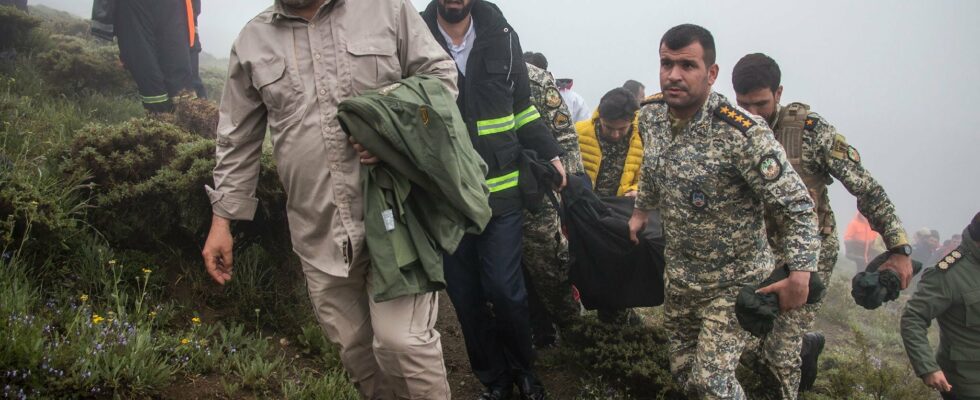Nearly forty-eight hours after the crash of Iranian President Ebrahim Raïssi’s helicopter, speculation about the causes of the accident is increasing. The helicopter disappeared early Sunday afternoon while flying over a steep, wooded area in difficult weather conditions, with rain and thick fog.
The helicopter’s nine passengers also included Iranian Foreign Minister Hossein Amir Abdollahian, the governor of East Azerbaijan province, the region’s main imam as well as the president’s security chief and three members of crew, all deceased.
A journey in an aging device
The aircraft was an American-made Bell 212. Put into circulation in 1968, this is a model that was widely used during the Vietnam War. As a utility helicopter, the Bell 212 is intended to adapt to all kinds of situations, including the transport of people, the deployment of aerial firefighting equipment, the transport of goods or even the assembly of weapons .
The aircraft was configured to carry government passengers. President Raïssi used it regularly for his travels – he traveled a lot in the country, having committed to visiting each of the 31 provinces in Iran every year, comment our colleagues from Time.
According to FlightGlobal’s 2024 directory of world air forces, Iran has around ten Bell 212 aircraft. Under the reign of the Shah [1941-1979], Iran was a major buyer of Bell and Agusta helicopters, becoming the largest helicopter military power in the Middle East. The exact origin of the helicopter involved in the crash has not been confirmed, but an Iranian source said it was linked to the Red Crescent of the Islamic Republic. Experts said the few details available suggested he could be between forty and fifty years old.
Responsibility attributed to American sanctions?
Even though it is a very old device, the Bell 212 is nevertheless extremely reliable when properly maintained. It is still widely used by the coast guard in Japan or civil security companies in the United States and Canada. However, Iran, targeted by American sanctions since the 1979 revolution, can no longer buy spare parts for its devices. The devices that fly in this way today in the country are all “tinkered with”.
On social media, former Iranian Foreign Minister Mohammad Djvad Zarif blamed the accident on persistent US sanctions, which have hampered the sale of aviation parts. US State Department spokesperson Matthew Miller responded: “Ultimately, it is the Iranian government that is responsible for the decision to fly a forty-five year old helicopter in what has been described like bad weather conditions, and no one else.”
On Monday, Turkish Transport Minister Abdulkadir Uraloglua told the press: “We have established that the helicopter’s signaling system was probably broken or that it did not have a signaling system. Otherwise, these signals would have reached us, which was not the case.” He did not specify whether his comments concerned the transponder or the aircraft’s distress beacon.
In addition, the United States said Monday that Iran had requested its assistance after the helicopter crash, even though the two countries have not maintained diplomatic relations since the 1979 revolution. “We said we “We would be willing to help, which we would do for any government in this situation,” said Matthew Miller. “Ultimately, for essentially logistical reasons, we were not able to provide this assistance,” he added, declining to give details on the content of the request or through what channel. communication had been made. However, he confirmed that it was to help with the search after the disappearance of the device. A crash whose circumstances remain to be clarified.
